Несколько интересных фактов о компании
- Традиционно для рекламы и оформления магазинов H&M используются постеры с изображением моделей на белом фоне. В рекламных кампаниях обычно задействованы известные модели, так например, в кампании осень-зима 2009 года участвовали Саша Пивоварова и Энико Михалик, а в осень-зима 2010 — Джон Кортахарена.
- Бренд неоднократно подвергался критике из-за негативного влияния на окружающую среду и ущемления прав рабочих в странах третьего мира. В ответ на это марка запускает линейку одежды H&M Conscious из органического хлопка и переработанных тканей, сбор которых магазин начал в 2013 году.
H&M — привлекательные коллекции, способные привнести в образ нотки шика, успешности, благополучия и непосредственности. Это стабильно пополняемый ассортимент, разработанный в соответствии с мировыми fashion трендами.
Ассортимент H&M
В мире высокой моды ТМ представлена под несколькими брендами, а именно:
& Other Stories
Модный бренд женской одежды, запущенный весной 2013 года, с открытием семи магазинов по всей Европе. Магазины находятся в Лондоне, Барселоне, Берлине, Копенгагене, Дублине, Милане, Париже и Стокгольме.
ARKET
Дочерняя торговая марка, которая выпускает яркую и стильную мужскую, женскую и детскую одежду по более низким ценам чем, например, тот же COS.
FaBric Scandinavien AB
Шведская компания, которая до 2010 года существовала как отдельный независимый бренд. Торговая марка занимается производством и продажей ткани.
Cheap Monday
Еще один дочерний бренд компании Hennes and Mauritz. Его дата основания приходится на 2004 год. Под ТМ выпускается мужская и женская одежда, а также аксессуары, обозначенные оригинальным логотипом в виде черепа. Продукция доступна во многих магазинах по всему миру, а также в собственных магазинах бренда и на сайте www.cheapmonday.com.
Monki
Неординарный дочерний бренд, который занимается производством одежды и обуви для девушек-тинейджеров, отличающейся легко узнаваемым дизайном. Торговая марка появилась в 2005 году. Вещи можно купить в магазинах в 13 странах и в интернете на ресурсе www.monki.com.
Weekday
Также Hennes and Mauritz принадлежит маркетплейс Afound, на котором собраны коллекции аксессуаров и одежды брендов со всего мира, а также оригинальные вещи, разработанные специально для проекта Afound. Первый магазин был открыт в 2018 году.
Еще одно детище компании — H&M Home — товары для дома и интерьера.
Если взять под объектив родительский бренд H&M — это модная одежда, обувь, аксессуары, нижнее белье, купальники, косметика и товары для дома в сегменте масс-маркет, отличающиеся первоклассным качеством и умеренной стоимостью. Ассортимент бренда условно можно разделить на 7 категорий:
- Женщины
- Мужчины
- Divided
- Дети
- H&M Home
- Обувь
- Аксессуары
Плодотворное сотрудничество
С 2004 года компания активно сотрудничает с известными модельерами.
Например, в ноябре 2004 года в некоторых магазинах H&M была представлена эксклюзивная коллекция одежды от Карла Лагерфельда — иконы стиля, главного дизайнера и креативного директора Chanel. Как сообщают источники, в крупных городах коллекция была распродана в течение часа.
 |
 |
Год спустя компания выпустила коллекцию в сотрудничестве со Стеллой Маккартни, дочерью легендарного сэра Пола Маккартни. В рекламной кампании приняла участие британская супермодель Кейт Мосс.
 |
В ноябре 2006-го увидела свет коллекция от авангардного нидерландского модного дома Viktor & Rolf.
В марте 2006 года компания начала сотрудничество с Мадонной.
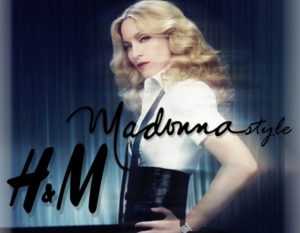 |
В ноябре 2007 года была представлена коллекция итальянского дизайнера Роберто Кавалли. Коллекцию раскупили, как горячие пирожки.
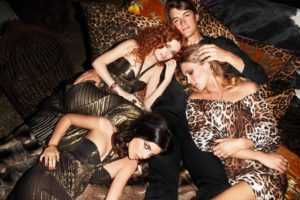 |
Также в 2007-м в Шанхае была представлена коллекция купальников от австралийской певицы Кайли Миноуг. Осенью 2008 года была выпущена коллекция в сотрудничестве с японским брендом Comme des Garçons.
 |
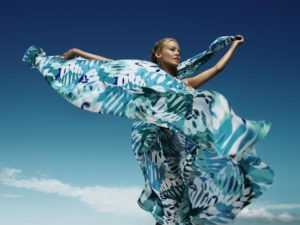 |
В 2009 году H&M решил поработать с известным британским модельером Мэтью Уильямсоном. Результатом их совместной деятельности стала женская и мужская эксклюзивные коллекции, которые продавались во всех магазинах бренда. 14 ноября в 200 магазинах была представлена лимитированная коллекция обуви и сумок от Jimmy Choo.
Вначале в 2010-го известная французская кутюрье Соня Рикель совместно с H&M разработала коллекцию женского трикотажа, а чуть позже — коллекцию нижнего белья.
 |
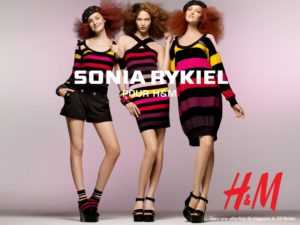 |
В конце 2010 года на суд публики представлена капсульная коллекция, созданная совместно с Домом моды Lanvin.
В 2011 году была представлена коллекция изысканной одежды, созданная в сотрудничестве H&M и Versace.
 |
В сентябре 2012 года компания выпустила совместную осеннюю коллекцию с певицей Ланой Дель Рей. В одном из платьев певица засветилась в музыкальном клипе, где она исполнила кавер-версию песни «Blue Velvet».
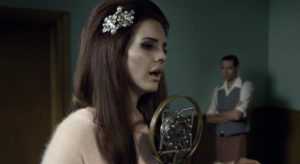 |
В 2013-м лицом бренда стала американская певица Бейонсе. Рекламная кампания, в которой принимала участие королева R’n’B, получила название «Beyonce as Mrs. Carter in H&M». Композиция «Standing on the Sun», вошедшая в 5-й студийный альбом певицы, использовалась в качестве саундтрека к кампании.
 |
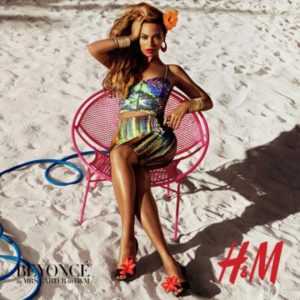 |
6 ноября 2014 года поступила в продажу совместная коллекция H&M и дизайнера Александра Вэнга.
 |
Осенью 2015 года компания разработала коллекцию одежды «H&M x Balmain» совместно с дизайнером модного дома Balmain Оливье Рустеном.
 |
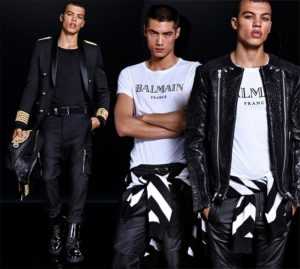 |
В ноябре 2015 H&M выпустила новогоднюю коллекцию одежды совместно с американской певицей Кэти Перри.
 |
В ноябре 2016 года H&M выпустила дизайнерскую линию в сотрудничестве с Kenzo.
В феврале 2017-го шведская певица Зара Ларссон разработала коллекцию «игривая, молодая, вдохновляющая и немного гламурная» для H&M.
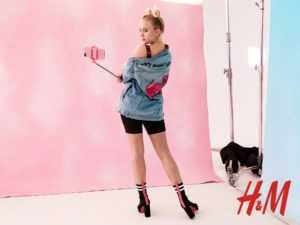 |
Британская супермодель Наоми Кэмпбелл тоже успела посотрудничать с H&M. В 2017-м «чёрная пантера» снялась в глобальной рекламной кампании по расширению прав и возможностей женщин. В рекламном ролике она носила одежду, которая стирает грань между мужским и женским.
The Ethical Jumble
H&M has been trying to position itself as a brand that cares about the environment. It has done so with its Conscious Collection, a line of clothing within the brand, made of sustainably sourced materials, and in-store recycle bins. In these recycle bins, customers can drop off their old clothes and get a coupon that they can redeem when they next shop at the store. What H&M is doing is greenwashing to distance itself from its role in damaging the environment; H&M is a fast fashion brand and fast-fashion products are unsustainable.
SEE ALSO:“The Pull Factor” Finds Brands Must Contribute to Sustainable Living, or Else
H&M’s marketing makes it seem as though the company is more environmentally friendly than it actually is. An example of this is their clothes recycling bins. H&M makes it sound like the clothes dropped off into their recycling bins are made into new garments. However, according to environmentalist Elizabeth Cline, that’s likely to happen with less than 1% of the clothes collected: Globally, only 25% of the clothes going into recycling actually end up in sorting plants, according to The Economist. Of the clothes sent to H&M’s sorter of choice, I:Collect — the company that handles the donations for H&M — says that only 35% of what’s collected is recycled at all.
Right from the get-go, there are ethical issues about a fast-fashion company trying to say that it is environmentally friendly — the industry is anything but environmentally friendly. The apparel industry is trying to undercut competitors and “there’s a race to the bottom on price and quality that’s unsustainable” according to Ryan Gellert, General Manager, EMEA Patagonia. For one, it is responsible for the tons of clothes that end up in landfills.
So, to understand whether it is acceptable for H&M to continue to market itself as an environmentally-responsible company, there are two questions we must consider:
- Are a few collections that use recycled materials or sustainably sourced materials enough to market a company as heading towards sustainability?
- Is obscuring the ugly truth to greenwash a company in the pursuit of an environmentally conscious image ethical?
“There are moral teaching to laws,” to quote Michael Sandel. It, therefore, stands to reason that when trying to establish how ethical an action is, one should first see whether it is legal. As it stands, there are no laws regarding what a garment retailer needs to do in order to state that it is becoming sustainable. Based on this, H&M is doing nothing illegal.
The second question is about misleading the public — and this is illegal. If a consumer is led to believe that a product, or the creator of that product, stands for something it is not, this is wrong in the eyes of the law — at least in the US. To illustrate, in 2013, Lance Armstrong was sued by people who read his autobiographies. They claimed that “he used his lies to sell books” and at least one of the plaintiffs said that she wouldn’t have bought the books if she had known that Armstrong had indeed been doping.
Shared Value: Making Businesses Part of the Solution
Michael Porter’s shared value idea, which is a relatively new way of looking at the role of business in solving societal issues facing the world, might just be the solution. Of the many pressing global issues, climate change has risen to the forefront. It is constantly in the news thanks to environmental activists such as Greta Thunberg, and the lead-up to the Canadian election, as well as the wildfires raging across large swathes of the US and Australia. There is little faith in businesses being part of the solution. According to Porter, faith in businesses is at the lowest it’s been in decades. The regularity of the climate strikes, for instance, illustrates how important sustainability and being environmentally conscious are — particularly to gen Z.
Corporate social responsibility (CSR) activities evolved from the idea that a company should impact the community in which it operates in a positive manner. It became a way for companies to show that we’re responsible and this bolstered their reputation which, in turn, gave them a slight competitive edge. However, CSR has failed to accomplish its primary goal of helping society because it’s been separate from a company’s core business Porter says. Companies need to go further. They need to create shared value (CSV). This requires executives to think in a new way so companies have a positive impact on society, be it through doing something for the environment or something else, while also creating economic value. A good example of a company that’s embraced CSV and been successfully is Patagonia. They urged customers to buy once and buy well rather than keep buying. They have mobile mending services available across Europe and America for their customers. As a result of the shift away from how fast-fashion companies do business, Patagonia’s profits from 2008 – 2014 tripled.
SEE ALSO:On Trend: Fashion that Resonates with Young People
Instead of making a company look like it’s doing more than it is, businesses should be propelled by marketers who understand the value of CSV. Instead of misleading customers by greenwashing, companies should look for ways to change the way they’re doing business, such as by taking a stake in a social/environmental issue and boosting their bottom line at the same time. If anything, in an industry like fast fashion, where there is so much competition, this is the way for a company to swim into its own ‘blue ocean’. This ocean is a market where there is no, or very little competition because a company has changed the way it does business as described by W. Chan Kim and Renée Mauborgne in their article, ‘Blue Ocean Strategy — From Theory to Practice.’
The Paradox of Development and Sustainability
Bangladeshi production is doubtlessly in place to keep the cost of H&M’s clothing so low, which is necessary to stay competitive in a market where there’s a ‘race to the bottom’ in terms of pricing. CEO Karl-Johan Persson admits that H&M needs to keep growing to keep shareholders happy, but says they also have a responsibility to “respect the planetary boundaries.”
A noble sentiment indeed, but surely Persson is kept awake at night wondering how a business can continue to produce 600 million garments per year and not badly damage the planet in the process, even if those garments are made from organic cotton. Like all fast-fashion companies, the success of H&M is dependent on a strategy of built-in obsolescence, which is to say that the clothing isn’t meant to last for ages, both in terms of style and quality. This strategy is, of course, inherently unsustainable.
The H&M Conscious Collection, to be fair, is comprised of a few pieces that could be wardrobe staples, including maxi dresses and tuxedo jackets. The ‘normal’ H&M collections could also stay in your closet for ages–think T shirts and jeans that stay wearable for years, for example. If they’re tossed out while they still look good, is this H&M’s fault…or our own?
Duped
Consumers, the company, and the people who live in the areas where clothes are dumped and manufactured are affected by H&M’s actions. In a broader sense, every living thing on the planet is affected by the pollution they add to. Consumers are affected because those who are trying to be environmentally conscious when buying clothes are spending money at a company that has misled them. The company would suffer more because if, like in the case of Lance Armstrong, consumers decide to sue the company for misleading information, its reputation suffers. The work a company does to be more environmentally responsible will be met with skepticism. Closer scrutiny of claims by a company like H&M could lead to unwanted publicity. This, along with any poor record regarding the wages it pays factory workers could discredit the company’s assertion that it wants “a climate positive value chain” and affect sales.
H&M’s actions affect the environment negatively. The stakeholders that are often sidelined, people who live in the areas affected by landfills and manufacturing, suffer the most and in the most personal way. This is because their health is impacted as their access to essential resources like water becomes limited. The clothing industry as a whole and fast-fashion, in particular, is a significant contributor to pollution beyond the clothes that end up in landfills. “Textile dyeing is the second-largest polluter of water globally” and the amount of water it takes to make one cotton shirt is “enough for one person to drink for two and half years”. Not only people are affected, but so is the wildlife and vegetation in the area. Despite the damage fast fashion has caused, and that H&M has contributed to the damage, H&M makes no mention of it. It is true that they are not responsible for taking care of the planet. Nor is the brand responsible for stating all the ways in which its practices harm the environment. Stating what it is doing to be more environmentally responsible by procuring sustainable cotton and by reducing waste is admirable. What is wrong is that H&M shouldn’t make itself look greener than it is — in any way.
SEE ALSO:Momma Red Bull, Teach Your Kids to Pick Up After Themselves
Despite calls for making fashion more sustainable and companies like H&M, Zara, and Nike publicly supporting the idea, there hasn’t been any significant change in the industry. If all fast-fashion companies did what H&M is doing, which arguably many of the big companies are, the damage caused to the environment will increase, as will the risk of exposure for these companies. Mass producing cheap clothes and following the same tactics, read greenwashing, like their competitors, in no way provides any real competitive edge.
According to Kant, what is wrong is wrong in every situation. In the case of H&M, lying to, or misleading, consumers has no real benefit. In the short-term, it benefits the company’s revenue. However, there is no long-term benefit. All H&M is doing is staying competitive by mirroring what direct competitors like Zara are doing. This is hardly a strategy.
Sustainable Processing
Many of the materials used are familiar to the industry like, Tencel x Refibra, a closed-loop production process to ensure a low economic impact. Shoes fabricated from Vegea, an innovative vegan leather alternative, are made from discarded grape skins and stalks and were used in H&M’s previous Conscious Exclusive collections.
H&M Conscious Exclusive A/W20 collection.
H&M Conscious Exclusive
With the H&M foundation supporting sustainable efforts throughout fashion, they are launching new fabrics that broaden the idea of circularity in garment production. Agraloop, a 2018 H&M Foundation Global Change Award first-prize winner, converts food-crop waste, like leftovers from oilseed hemp, into biofiber, a new natural fiber, launching worldwide with this collection.
Zinnia Kumar and models, H&M Conscious Exclusive A/W20 collection campaign.
H&M CONSCIOUS EXCLUSIVE
The collection also uses a cellulosic yarn manufactured by Eastman Naia Renew. This innovative yarn is manufactured through a unique, patented process, consisting of 60% certified wood fiber and blends it with 40% recycled waste plastic to create a soft, long-lasting fabric, also launching worldwide with this Conscious Exclusive collection.
Zinnia Kumar, H&M Conscious Exclusive A/W20 collection campaign.
H&M Conscious Exclusive
H&M has been working with other sustainable fabric manufacturers in producing their collection, crafting circular garments with long-lasting style. WeaReSpingDye is a sustainable dying method that uses recycled polyester, as well as recyclable polyester. This closed-loop system consumes 75% less water and 90% fewer chemicals.
Ultimately the process uses 30% less energy and has a 30% reduction in CO2. They enhance the longevity of garments while providing rich color.
H&M is also making pieces from CO2, further reducing their footprint. Accessories like sunglasses are produced from a process that creates carbon-negative plastic that draws carbon from the atmosphere. This was created by Made of Air, a new biochar-based material designed to combat climate change. Ultimately, this translates as more CO2 removed than emitted through the process, storing carbon in products.
H&M Conscious Exclusive A/W20 collection.
H&M Conscious Exclusive
H&M enables manufactured goods to become an engineered carbon sink, actively reversing climate change. Other accessories like choker necklaces, earrings, shoe clips crafted from recycled metals.
Zinnia Kumar, H&M Conscious Exclusive A/W20 collection campaign.H&M CONSCIOUS EXCLUSIVE
H&M CONSCIOUS EXCLUSIVE
H&M is also incorporating a process that takes high-value cotton waste into recycled cotton by Texloop Recycling. While creating new fabrics, Texloop is also preserving the original fiber quality in the process. They offer life for the next generation of recycled materials.
Professional Standards: All Bark and No Bite?
There is no regulatory body which ensures that a company’s marketing is ethical like there is for advertising. Most countries have a watchdog which ensures that advertisements don’t mislead consumers. In Canada, it is the Advertising Standards Canada. The American Marketing Association (AMA) and the Canadian Marketing Association (CMA) have codes of ethics and best practices, but these require self-regulation.
Based on CMA’s Code of Ethics and Standards of Practice, H&M has broken two codes of ethics. The first is its overarching ethical principle about truthfulness and the second is regarding its universal marketing practice about the accuracy of representation. The principle about truthfulness states that “marketing communications must not omit material facts and must be clear, comprehensible, and truthful. Marketers must not knowingly make a representation to a consumer or business that is false or misleading.” I would argue that H&M is misleading consumers into thinking that it recycles the clothes it collects. In truth, less than half is recycled.
According to the universal marketing practice about the accuracy of representation, “marketers must not misrepresent a product, service, marketing program or make any other misleading representation, even if not directly related to the product or service, and must not mislead by statement or manner of demonstration or comparison.” H&M is doing just this. They are not stating just how much of the clothing collected from their recycle bins are reused or recycled. They’re letting consumers think it is all being reused or recycled.
The Conscious Collection and the goal of only using sustainably sourced cotton by 2020 are admirable, but it does little to address the harm fast-fashion causes. More to the point, the Conscious Collection and the push towards using sustainably-sourced cotton makes it is easier for H&M to lie through the use of half-truths. On its website, H&M states that their recycle bins are a way to ensure that customers’ textiles are reused and don’t end up in landfills. Nowhere does it state that it is only a percentage that is recycled.
From ‘Waste To Wear’
The Conscious Exclusive Autumn / Winter 2020 collection has style for those moments when you have to dress up a little more than you have been during the pandemic. Styles in this collection are elegant statement pieces for those who still want to dress up when socially distancing.
Creative Advisor at H&M Ann-Sofie Johansson says, “for A/W20, we really wanted to be trailblazers – pushing the limits of creativity and sustainable fashion – by focusing on waste. As a result, the pieces in this collection are crafted from truly amazing materials produced from waste.»
Johansson continues, «working with this kind of transformation and being able to speak to our customers through beauty, we hope that waste can be part of the future of sustainable fashion.”
She adds,
Qualities Worthy of Honor and Recognition
Marketers need to consider what it means to be just and how justice fits within the business world. I would argue that Porter’s idea of CSV is about justice. If we consider ‘justice’ as being the quality of being fair and reasonable, we need to think of what these qualities need to be. As Sandel points out by quoting Aristotle, “It’s very hard to argue about justice without first arguing about …. what qualities are worthy of honor and recognition.” While very difficult to turn into action, the codes of ethics outlined by marketing bodies like the CMA and the AMA are an excellent starting point. Anything that violates these codes, even in a seemingly small way, needs to be scrutinized.
Marketers need to consider legal consequences, the professional standards outlined by the relevant marketing association and those who their marketing can hurt. Marketers concerned about ethical practices need to see if their core values align with the mission, vision, and core values of the company for which they work. In the case of H&M, the company is seen to be leading the way towards sustainability. They haven’t faced a legal challenge or one in the market, but an ethical challenge. Limited reporting on H&M’s marketing tactics in the press does not mean it’s not an ethical situation that needs to be addressed. Because H&M hasn’t had to deal with any legal ramifications doesn’t mean that they haven’t done anything wrong.
Fast fashion will need to change its business models to adapt to changing consumer expectations. Businesses that can’t adapt, no matter how successful they may have been, collapse. Just look at Forever 21.
Half-truths about being environmentally conscious and reducing waste won’t hold up under scrutiny for much longer. Unethical businesses don’t last in the long run when they refuse to make changes. The only reason companies like Nike and De Beers were able to survive after consumer outrage was because they introduced policies that were far beyond what was being practiced in the industry. Considering the number of clothing brands that are environmentally conscious, H&M and others of that ilk will need to do something revolutionary if they’re not to be caught on the back foot.
The fundamental question is: Is this ethical? Marketers create campaigns to capture the attention of consumers. They craft ways to communicate messages and value propositions. It should, therefore, be marketers who take a stand for what is right for the long term reputation of their company.
Image source: Jonas Lee
It’s Up To Us
Built-in obsolescence in clothing works for two reasons. One, consumers believe the garment is ‘out of style’ quickly so throw it away. Two, the garment costs very little, so the consumer feels little guilt about binning it. Arguably, fast fashion companies are only fulfilling demand, so if we stopped buying and binning so much fashion, producers would be forced to change tactics.
We now know about the dangers of sugar in our diet, and if a friend came back from the supermarket with a bag full of chocolate, sugary cereals and sodas, no doubt we’d raise an eyebrow and feel a bit disgusted. The same should hold true for friends coming back with bagfuls of ‘disposable’ fashion from Primark, H&M, Forever 21 and their ilk. We need to turn the notion of ‘fast fashion’ into a social stigma.

It’s not going to be easy, given the popularity of the mindless consumerism of the Kardashians and the mall culture of developed countries, but Anna Gedda, H&M’s head of sustainability, is sure reason will prevail, and states that H&M customers are demanding more information about the origin of the clothes they buy. “We see it in the amount of queries we get by mail, in stores and in customer surveys. People are aware and want more information on social as well as environmental issues,” she told Reuters.
Customers are also demanding centres to recycle their clothing–something Kering (formerly the Gucci Group) has paid close attention to. Citing environmental reasons and consumer pressure as well as the risks of output disruptions and water shortages in the production process, Kering has paired up with H&M to develop new technologies with Worn Again, a company that makes yarn from recycled textiles. Both companies intend to use these fibres in their creations within the next year or so.
You see? Consumer demands can make a difference to corporate policies. But the best statement we could possibly make is to decrease demand for fast fashion. No one is forcing us to buy this stuff, no matter how sustainable it may be. We need to ask ourselves how much clothing we actually need–and why we want more. Is it insecurity? Is it lack of personal style and creativity? Is it pure greed? Ultimately, if landfill is packed with discarded clothing that will take centuries to biodegrade, frankly we have only ourselves to blame.
Did you enjoy this article? Follow us on and
“Wear The Waste”
The Conscious Exclusive Autumn / Winter 2020 collection is creating ‘beauty from waste’ and turning waste into innovative fabrics through circular design. Everyday waste is the main ingredient for H&M, sourcing from pre and post-consumer waste like recycled cotton, food crop waste, and by-products of winemaking.
H&M Conscious Exclusive A/W20 collection.
H&M Conscious Exclusive
Sustainable materials and unique garment processes create the cut and sewn elements of the collection. Complete with occasion dresses, accessories, and tailored suiting, these staples breed life back into your seasonal wardrobe.
H&M Conscious Exclusive A/W20 collection.
H&M Conscious Exclusive
MORE FOR YOU
Stock Market Just Passed Recession Test
H&M offers modern styles, using circularly manufactured textiles to create men’s and women’s evening wear. Styles come in black and green jacquard taffeta, yellow jacquard pieces for both men and women, and festooned with dusty green flowers. The prints are inspired by vintage floral wallpaper and tapestries, flower appliqués, and moth motifs are reminiscent of the cycle of life.
История создания бренда H&M
История компании берет свое начало в 1947 году, когда Эрлинг Перссон открыл первый магазин женской одежды Hennes в шведском городе Вестерос в 1947 году. Со шведского языка «Hennes» переводится — «для нее».
 |
В 1964 году магазин с таким же названием появился в Норвегии.
 |
 |
В 1968 году Перссон приобрел торговую лавочку для охотников и рыболовов Mauritz Widforss. В результате ассортимент пополнился линией мужской одежды, и название бренда меняется на Hennes & Mauritz, позже сокращенное до названия H&M.
В 1974 году компания была зарегистрирована на Стокгольмской фондовой бирже. Следом за этим событием в 1976 году бренд пересек границы Скандинавии. Европейская экспансия началась с открытия фирменного магазина на территории Туманного Альбиона.
В 1998 г. торговая марка приобрела домен hm.com и начала активно продвигаться в сети.
В 2000-м H&M отправился покорять США. 31 марта открывается первый магазин на Пятой авеню в Нью-Йорке.
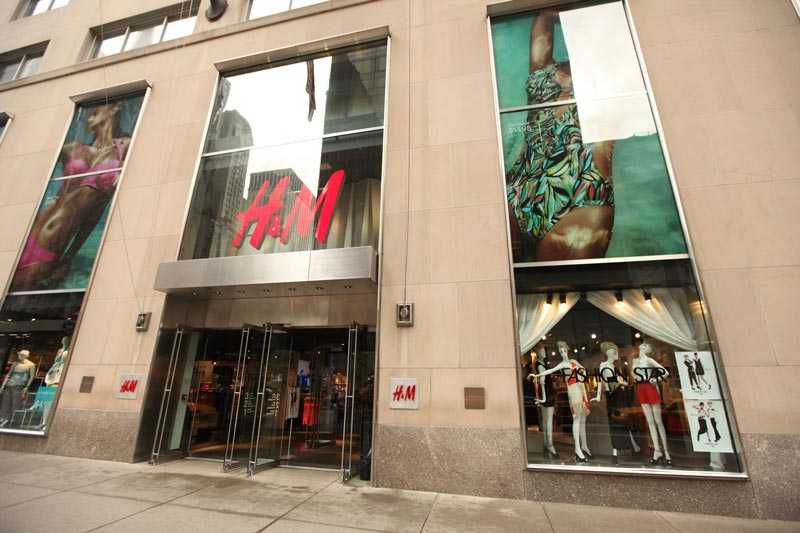
В начале 2008-го компания начала осваивать новую нишу — товары для дома. Первоначально продукция (подушки, текстиль и т. д.) распространялась через интернет. Теперь же магазины H&M Home разбросаны по всему миру, включая Данию, Финляндию, Германию, Нидерланды, Норвегию, Швецию и Англию.
После расширения в Азии и на Ближнем Востоке и запуска концептуальных магазинов, включая COS, Weekday, Monki и Cheap Monday, в 2009–2010 гг., консалтинг по брендингу Interbrand признал H&M как двадцать первый самый ценный мировой бренд. Его стоимость оценивалась в 12–16 млрд. долларов.
В сентябре 2013 года в городе Чэнду в Китае открылся 3000-й магазин ТМ.
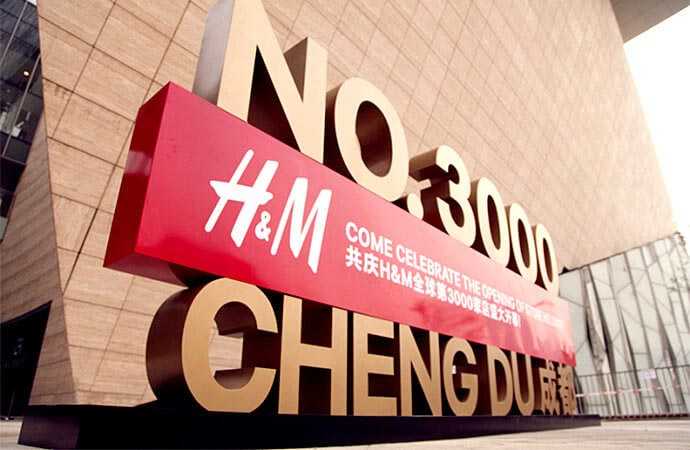
В 4-ом квартале 2017-го продажи H&M просели на 4 %. Это худший показатель за 10 лет, в связи с этим акции бренда подешевели на 13 % — до уровня 2009 года. На фоне этих событий было принято решение закрыть коммерчески не успешные магазины и начать продавать одежду в китайском онлайн-магазине Tmall, который принадлежит торговой площадке Alibaba.






























